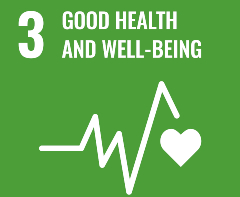.jpg)
Graphene students use 3D printing to create PPE for the NHS
Second-year PhD students at Manchester’s Department of Materials have printed personal protective equipment (PPE) that is proving vital to frontline NHS workers who are treating patients with COVID-19.
Scott Dean, Vicente Orts Mercadillo and Clara Skuse, who are studying Graphene and 2D Materials at the University, have supplied more than 55 reusable face masks to a surgery and ambulance service in Essex and the Salford Royal NHS Foundation Trust.
Innovation begins at home
“I bought a 3D printer online post-lockdown and the timing just happened to coincide with the need for PPE,” says Scott.
“My dad and aunty work for the NHS in Essex (where I’m based during lockdown), and I thought making visors to support them and their colleagues would be the best thing to do. The printer has been running nonstop since I bought it in April.”
.jpg)
Tailor-made for NHS staff
“I’m printing a basic model that was developed online in conjunction with a US health body that authenticated this specific design. My aunty gave my samples to healthcare professionals and from the feedback they provided, I adapted the PPE by adding an adjustable strap to make them more comfortable to wear.”
The visors the students are producing are not single use, which might be the case for some PPE available online, and so each one takes up to three hours to print. The benefit is that they are thicker, stronger and more flexible, and so they can be sterilised and used safely when treating different patients.
Maximising PPE output at Manchester
While Scott prints at home, Vicente and Clara have been using a separate 3D printer in Manchester, coordinating their production for Salford Royal with Professor Brian Derby, Polly Greensmith and technicians at the University.
“Clara and I have been contributing to the University’s effort. We’ve collected the ends of University filament spools (which can’t be left printing overnight) and have been recycling the remains to print visors and maximise the team's output,” says Vicente.
A competitive online market
As efforts increase to support healthcare professionals around the world with the necessary PPE, there seems to be an online shortage for some materials needed for 3D printing.
Scott added: “I don’t print the straps and foam that are added to make the visors comfortable and sourcing these parts is becoming increasingly difficult. Everyone is buying from the same suppliers, resulting in longer delivery times and prices have doubled.”
Graphene at The University of Manchester
Printing PPE is not Scott, Vicente and Clara’s first joint venture. In November 2019, they hosted the University’s inaugural ‘Graphene Hackathon’ along with eight other students. The Hackathon welcomed dancers, artists, scientists and engineers onto campus for one weekend, where they found out more about graphene, how to isolate it and how to use it in a plethora of electronic components to create a graphene product.
When asked if the students have plans to add graphene to their PPE, Scott replied “Not yet!”
Find out more about graphene at Manchester.

